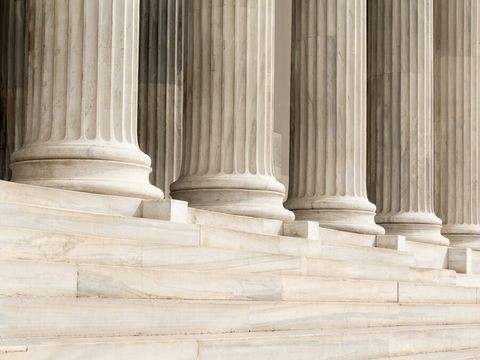DOL Issues Proposed Rule Implementing Executive Order 13496 - Notice of NLRA Rights
Client Alert | 3 min read | 08.10.09
Federal contractors and subcontractors covered by President Obama's Executive Order 13496, Notification of Employee Rights Under Federal Labor Laws, will soon be required to post new, lengthy notices of their employees' rights under federal labor law. The U.S. Department of Labor ("DOL") issued its Proposed Rule implementing this Obama Executive Order on August 3, 2009. Notable provisions of the Proposed Rule include the following:
Contract Clause - E.O. 13496 requires federal contracting departments and agencies to include in their contracts a clause, set forth in the Order, requiring compliance with DOL regulations implementing E.O. 13496. Under the Proposed Rule, the same clause would be included in subcontracts as well. Unlike other mandatory EEO and affirmative action clauses imposed on contractors and subcontractors, which may be incorporated by reference, the Proposed Rule requires that the employee notice clause be included verbatim in contracts, subcontracts, and purchase orders; incorporation by reference is not permitted under the Proposed Rule.
Coverage - The clause must be included in all federal contracts and subcontracts, except: (1) collective bargaining agreements, (2) prime contracts (but not subcontracts) for purchase below the simplified acquisition threshold, currently $100,000, (3) contracts resulting from solicitations issued prior to the effective date of the final rule to be promulgated under the Order, and (4) certain contracts or subcontracts exempted by the Secretary of Labor where the clauses would not serve the national interest or would impair economical and efficient government procurement.
Content of Notice - Rather than requiring contractors to post the statutory language of the National Labor Relations Act ("NLRA") or a simplified restatement of the NLRA, DOL proposes that covered contractors and subcontractors post a statement, set forth in the Proposed Rule, laying out the NLRA rights of employees in great detail. The proposed content is based on statutory text as well as decisions of the National Labor Relations Board ("NLRB") and courts. DOL claims in the Proposed Rule that this broader, more detailed statement will "better enable employees to apply the rights to actual workplace situations." The notice must also include NLRB contact information and describe basic enforcement procedures, including the six-month statute of limitations for unfair labor practice charges under the NLRA.
Form of Notice - Employers must post the notice in conspicuous places in and about their plants and offices where employees covered by the NLRA are likely to see it. If the employer customarily posts notices electronically, it must likewise post notice of NLRA rights in a prominent position on its electronic site where other employee notices are customarily placed. An employer can satisfy this requirement by posting certain special introductory language set forth in the Proposed Rule and linking this language to the DOL web site that contains the full text of the poster.
Enforcement and Penalties - The proposed enforcement provisions are largely borrowed from the DOL's enforcement scheme for Executive Order 13201, known as the "Beck Poster" Executive Order. The Office of Federal Contract Compliance Programs ("OFCCP") is given enforcement authority, to be exercised in the context of standard compliance evaluations or in response to written complaints received by OFCCP or the DOL 's Office of Labor-Management Standards. If a contractor violates the Order, the DOL must make reasonable efforts to secure compliance through conciliation before proceeding to enforcement proceedings, which begin with a hearing before an Administrative Law Judge.
Penalties for violation of the Order could include cancelling or suspending a contract, conditioning its continuance on a requirement for future compliance, or debarment. The DOL would be required, however, to offer the head of the government contracting department or agency an opportunity to object to any of these sanctions where the contract is essential to the agency's mission.
DOL will accept comments to the above provisions by September 2, 2009.
If you have any questions about this Proposed Rule, please contact the professionals listed to the left or your regular Crowell & Moring contact.
Contacts
Insights
Client Alert | 5 min read | 12.12.25
Eleventh Circuit Hears Argument on False Claims Act Qui Tam Constitutionality
On the morning of December 12, 2025, the Eleventh Circuit heard argument in United States ex rel. Zafirov v. Florida Medical Associates, LLC, et al., No. 24-13581 (11th Cir. 2025). This case concerns the constitutionality of the False Claims Act (FCA) qui tam provisions and a groundbreaking September 2024 opinion in which the United States District Court for the Middle District of Florida held that the FCA’s qui tam provisions were unconstitutional under Article II. See United States ex rel. Zafirov v. Fla. Med. Assocs., LLC, 751 F. Supp. 3d 1293 (M.D. Fla. 2024). That decision, penned by District Judge Kathryn Kimball Mizelle, was the first success story for a legal theory that has been gaining steam ever since Justices Thomas, Barrett, and Kavanaugh indicated they would be willing to consider arguments about the constitutionality of the qui tam provisions in U.S. ex rel. Polansky v. Exec. Health Res., 599 U.S. 419 (2023). In her opinion, Judge Mizelle held (1) qui tam relators are officers of the U.S. who must be appointed under the Appointments Clause; and (2) historical practice treating qui tam and similar relators as less than “officers” for constitutional purposes was not enough to save the qui tam provisions from the fundamental Article II infirmity the court identified. That ruling was appealed and, after full briefing, including by the government and a bevy of amici, the litigants stepped up to the plate this morning for oral argument.
Client Alert | 8 min read | 12.11.25
Director Squires Revamps the Workings of the U.S. Patent Office
Client Alert | 8 min read | 12.10.25
Creativity You Can Use: CJEU Clarifies Copyright for Applied Art
Client Alert | 4 min read | 12.10.25
Federal Court Strikes Down Interior Order Suspending Wind Energy Development



